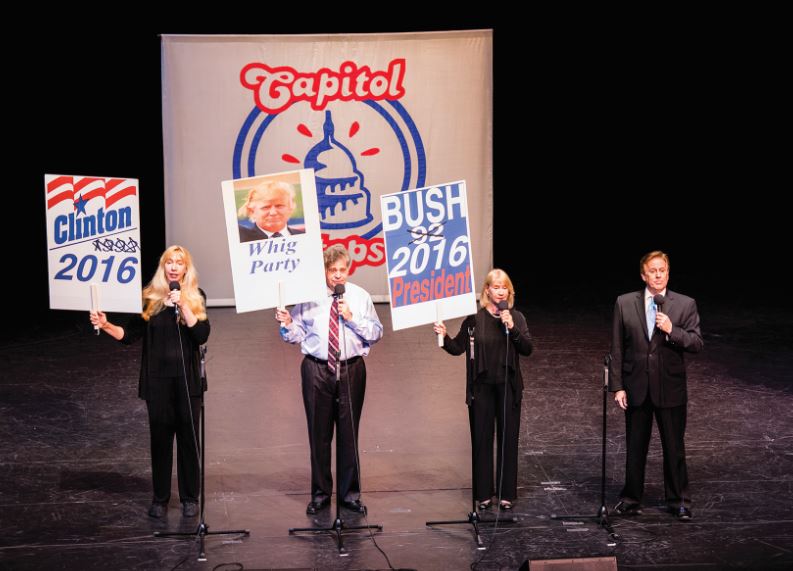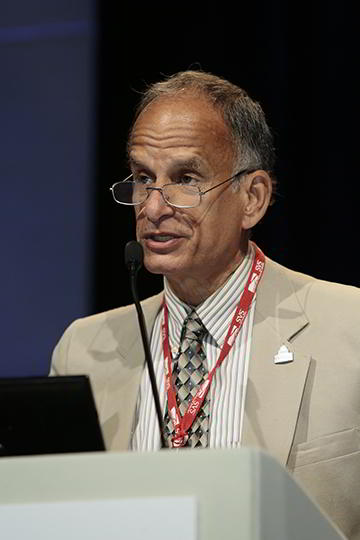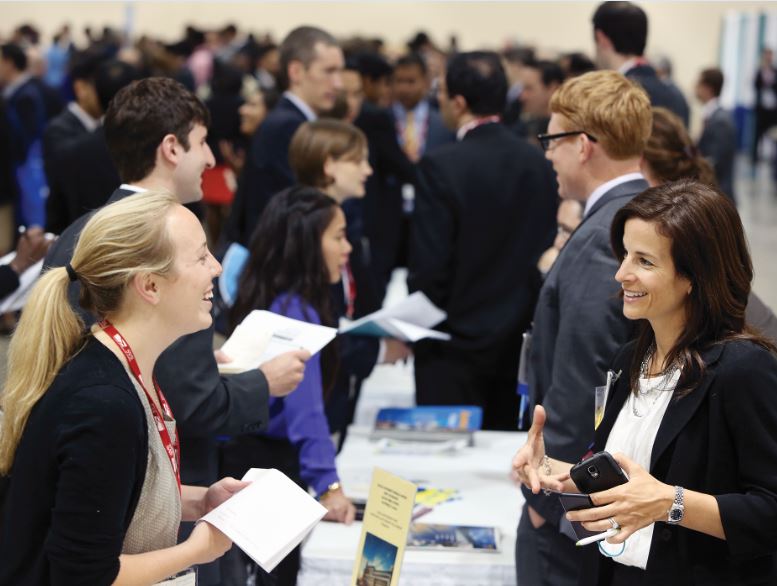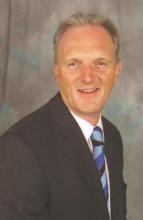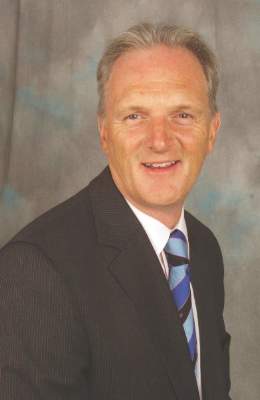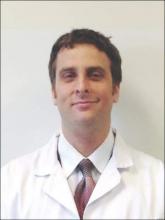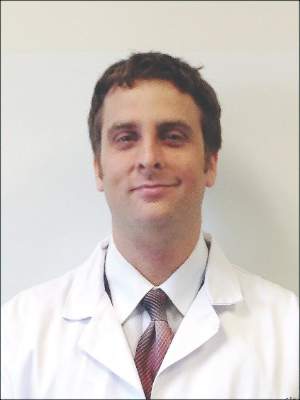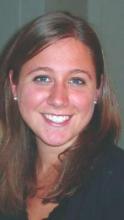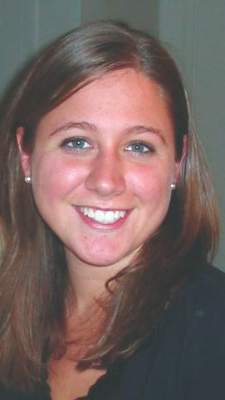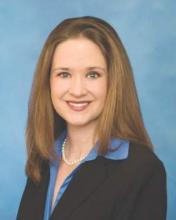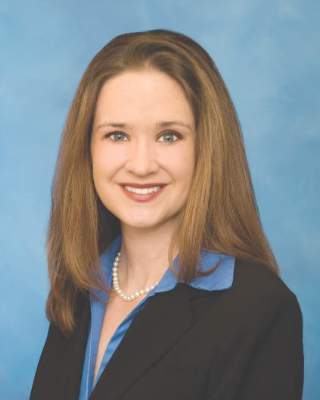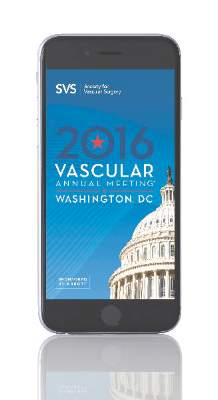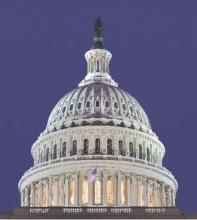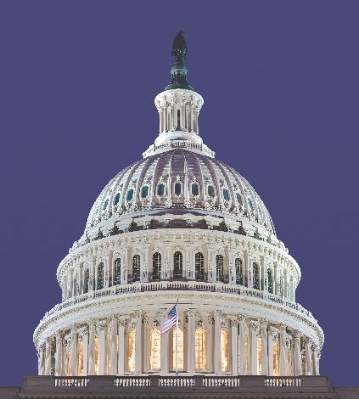User login
Enjoy a ‘Capitol’ Performance with the Capitol Steps
First, combine a Washington, D.C. venue and an upcoming and hotly debated presidential election. Add a date shortly before the GOP and Democratic national conventions.
What do you get? The perfect time and place for a political comedy show performed by the “Capitol Steps,” a group that’s been poking fun at politics, politicians and the headlines of the day since the Reagan administration.
The group will perform its particular brand of satirical humor – song parodies, standup comedy and more – at a special presentation for all VAM attendees from 8:30 to 9:30 p.m., Friday, in Potomac Ballroom A/B. The event is open at no charge to all registered attendees, guests and exhibitors.
No topic is safe, whether it’s the FBI’s fight earlier this year with Apple over a locked iPhone to Bill Clinton commenting on Hillary to Donald Trump and Sarah Palin. Perhaps the audience will hear Bernie Sanders sing a show tune or hear about “Deleter of the Facts.”
The group got its start in 1981. Senate staffers, planning entertainment for a Christmas party, created song parodies and skits from the headlines at the time and created the Capitol Steps in the process. The group has recorded more than 30 albums (the latest is “What to Expect When You’re Electing”) and has been featured on national television and radio.
“We are thrilled to offer the humor of the Capitol Steps to our members and guests,” said SVS President Dr. Bruce A. Perler, who was instrumental in bringing the “Steps” to VAM. “I am certain that, no matter what a particular member’s politics, in this most ‘unusual’ of presidential election campaigns, the Capitol Steps will provide plenty of laughs and remarkable satirical insights.”
First, combine a Washington, D.C. venue and an upcoming and hotly debated presidential election. Add a date shortly before the GOP and Democratic national conventions.
What do you get? The perfect time and place for a political comedy show performed by the “Capitol Steps,” a group that’s been poking fun at politics, politicians and the headlines of the day since the Reagan administration.
The group will perform its particular brand of satirical humor – song parodies, standup comedy and more – at a special presentation for all VAM attendees from 8:30 to 9:30 p.m., Friday, in Potomac Ballroom A/B. The event is open at no charge to all registered attendees, guests and exhibitors.
No topic is safe, whether it’s the FBI’s fight earlier this year with Apple over a locked iPhone to Bill Clinton commenting on Hillary to Donald Trump and Sarah Palin. Perhaps the audience will hear Bernie Sanders sing a show tune or hear about “Deleter of the Facts.”
The group got its start in 1981. Senate staffers, planning entertainment for a Christmas party, created song parodies and skits from the headlines at the time and created the Capitol Steps in the process. The group has recorded more than 30 albums (the latest is “What to Expect When You’re Electing”) and has been featured on national television and radio.
“We are thrilled to offer the humor of the Capitol Steps to our members and guests,” said SVS President Dr. Bruce A. Perler, who was instrumental in bringing the “Steps” to VAM. “I am certain that, no matter what a particular member’s politics, in this most ‘unusual’ of presidential election campaigns, the Capitol Steps will provide plenty of laughs and remarkable satirical insights.”
First, combine a Washington, D.C. venue and an upcoming and hotly debated presidential election. Add a date shortly before the GOP and Democratic national conventions.
What do you get? The perfect time and place for a political comedy show performed by the “Capitol Steps,” a group that’s been poking fun at politics, politicians and the headlines of the day since the Reagan administration.
The group will perform its particular brand of satirical humor – song parodies, standup comedy and more – at a special presentation for all VAM attendees from 8:30 to 9:30 p.m., Friday, in Potomac Ballroom A/B. The event is open at no charge to all registered attendees, guests and exhibitors.
No topic is safe, whether it’s the FBI’s fight earlier this year with Apple over a locked iPhone to Bill Clinton commenting on Hillary to Donald Trump and Sarah Palin. Perhaps the audience will hear Bernie Sanders sing a show tune or hear about “Deleter of the Facts.”
The group got its start in 1981. Senate staffers, planning entertainment for a Christmas party, created song parodies and skits from the headlines at the time and created the Capitol Steps in the process. The group has recorded more than 30 albums (the latest is “What to Expect When You’re Electing”) and has been featured on national television and radio.
“We are thrilled to offer the humor of the Capitol Steps to our members and guests,” said SVS President Dr. Bruce A. Perler, who was instrumental in bringing the “Steps” to VAM. “I am certain that, no matter what a particular member’s politics, in this most ‘unusual’ of presidential election campaigns, the Capitol Steps will provide plenty of laughs and remarkable satirical insights.”
Presidentially Speaking
Dr. Bruce Perler, Johns Hopkins Hospital, will give his SVS Presidential Address Friday after a short introduction by President-Elect Dr. Ronald Fairman.
Friday: 11 a.m. – 12:15 p.m. Potomac Ballroom A/B
Dr. Bruce Perler, Johns Hopkins Hospital, will give his SVS Presidential Address Friday after a short introduction by President-Elect Dr. Ronald Fairman.
Friday: 11 a.m. – 12:15 p.m. Potomac Ballroom A/B
Dr. Bruce Perler, Johns Hopkins Hospital, will give his SVS Presidential Address Friday after a short introduction by President-Elect Dr. Ronald Fairman.
Friday: 11 a.m. – 12:15 p.m. Potomac Ballroom A/B
Are You Going to the Fair? A Guide to What You Need to Know
There’s no Ferris Wheel or tilt-a-whirl at this fair – just useful information on 73 vascular training programs and the chance for aspiring vascular surgeons to find a good fit for their futures.
Programs are arranged on the floor by the types of offered paradigms: 0+5, 5+2 as well as those offering both training pathways. The configuration, introduced in 2015, makes it easier for attendees to locate the programs in which they are specifically interested.
This year residents/students will receive more data – such as if the program is academic- or community practice-based – to help them better locate the programs in which they are most interested in visiting in the time allotted. The change was made as the result of attendee feedback from earlier fairs.
The Residency Fair is the perfect way for residents and students to network and make connections. Program directors, faculty and current trainees from the 73 institutions will be on hand to talk with interested attendees.
More than 200 students and residents who have an active interest in vascular surgery are expected to participate.
A directory of all participating programs was distributed to students and residents earlier and also will be available at the fair. V
Friday: 5:00 P.M. - 6:30 P.M.
Exhibit Hall D
There’s no Ferris Wheel or tilt-a-whirl at this fair – just useful information on 73 vascular training programs and the chance for aspiring vascular surgeons to find a good fit for their futures.
Programs are arranged on the floor by the types of offered paradigms: 0+5, 5+2 as well as those offering both training pathways. The configuration, introduced in 2015, makes it easier for attendees to locate the programs in which they are specifically interested.
This year residents/students will receive more data – such as if the program is academic- or community practice-based – to help them better locate the programs in which they are most interested in visiting in the time allotted. The change was made as the result of attendee feedback from earlier fairs.
The Residency Fair is the perfect way for residents and students to network and make connections. Program directors, faculty and current trainees from the 73 institutions will be on hand to talk with interested attendees.
More than 200 students and residents who have an active interest in vascular surgery are expected to participate.
A directory of all participating programs was distributed to students and residents earlier and also will be available at the fair. V
Friday: 5:00 P.M. - 6:30 P.M.
Exhibit Hall D
There’s no Ferris Wheel or tilt-a-whirl at this fair – just useful information on 73 vascular training programs and the chance for aspiring vascular surgeons to find a good fit for their futures.
Programs are arranged on the floor by the types of offered paradigms: 0+5, 5+2 as well as those offering both training pathways. The configuration, introduced in 2015, makes it easier for attendees to locate the programs in which they are specifically interested.
This year residents/students will receive more data – such as if the program is academic- or community practice-based – to help them better locate the programs in which they are most interested in visiting in the time allotted. The change was made as the result of attendee feedback from earlier fairs.
The Residency Fair is the perfect way for residents and students to network and make connections. Program directors, faculty and current trainees from the 73 institutions will be on hand to talk with interested attendees.
More than 200 students and residents who have an active interest in vascular surgery are expected to participate.
A directory of all participating programs was distributed to students and residents earlier and also will be available at the fair. V
Friday: 5:00 P.M. - 6:30 P.M.
Exhibit Hall D
Special Events on Tap at VAM Thursday
Special activities are everywhere today at the Vascular Annual Meeting, including the official welcome and an opening reception, not to mention the opening of the Exhibit Hall.
Activities include:
• The Opening Ceremony, 8 to 8:30 a.m. in Potomac Ballroom A/B.
• The SVS Awards Ceremony, 2:50 to 3 p.m., Potomac Ballroom A/B. Who will receive SVS’ highest honor, the Lifetime Achievement Award? Find out at the ceremony.
• Opening of the Exhibit Hall at 12 p.m. Exhibits will close at 6 p.m.
• The Opening Reception, 5:30 to 6:30 p.m., Exhibit Halls A-C.
• Alumni receptions. Alums from many institutions – Harvard, Yale, UCLA, Montefiore, Cleveland Clinic, Mayo Clinic, Baylor and many others – will catch up with former classmates and other graduates at receptions Thursday evening. The full list can be found in the Mobile App. Only the Baylor reception is off-site; all others are held at the Gaylord National Resort & Convention Center.
Special activities are everywhere today at the Vascular Annual Meeting, including the official welcome and an opening reception, not to mention the opening of the Exhibit Hall.
Activities include:
• The Opening Ceremony, 8 to 8:30 a.m. in Potomac Ballroom A/B.
• The SVS Awards Ceremony, 2:50 to 3 p.m., Potomac Ballroom A/B. Who will receive SVS’ highest honor, the Lifetime Achievement Award? Find out at the ceremony.
• Opening of the Exhibit Hall at 12 p.m. Exhibits will close at 6 p.m.
• The Opening Reception, 5:30 to 6:30 p.m., Exhibit Halls A-C.
• Alumni receptions. Alums from many institutions – Harvard, Yale, UCLA, Montefiore, Cleveland Clinic, Mayo Clinic, Baylor and many others – will catch up with former classmates and other graduates at receptions Thursday evening. The full list can be found in the Mobile App. Only the Baylor reception is off-site; all others are held at the Gaylord National Resort & Convention Center.
Special activities are everywhere today at the Vascular Annual Meeting, including the official welcome and an opening reception, not to mention the opening of the Exhibit Hall.
Activities include:
• The Opening Ceremony, 8 to 8:30 a.m. in Potomac Ballroom A/B.
• The SVS Awards Ceremony, 2:50 to 3 p.m., Potomac Ballroom A/B. Who will receive SVS’ highest honor, the Lifetime Achievement Award? Find out at the ceremony.
• Opening of the Exhibit Hall at 12 p.m. Exhibits will close at 6 p.m.
• The Opening Reception, 5:30 to 6:30 p.m., Exhibit Halls A-C.
• Alumni receptions. Alums from many institutions – Harvard, Yale, UCLA, Montefiore, Cleveland Clinic, Mayo Clinic, Baylor and many others – will catch up with former classmates and other graduates at receptions Thursday evening. The full list can be found in the Mobile App. Only the Baylor reception is off-site; all others are held at the Gaylord National Resort & Convention Center.
Charting the Benefits of AAA Screening in England
The United Kingdom’s National Health Service (NHS) in England has invited around 1.3 million 65-year-old men for abdominal aortic aneurysm (AAA) screening since 2009. Dr. Jonothan Earnshaw and his colleagues performed a study to examine the results of this screening and the safety of the men in surveillance.
The NHS AAA Screening Programme (NAAASP) conducted ultrasound scans to look for AAAs, according to Dr. Earnshaw.
A total of 1,019,480 of those invited were scanned (79.5%). The prevalence of an AAA greater than 2.9 cm diameter was 1.3% (falling from 1.7% in 2009 and 2010 to 1.1% in 2015).
A total of 11,972 men had small (3-4.5 cm) or medium (4.5-5.4 cm) AAAs and were monitored via surveillance, with 13 deaths from AAA rupture.
Some 1,025 men with initial aortic diameter greater than 5.4 cm, and a further 898 men whose AAA grew during surveillance were referred for consideration of elective AAA repair. Mortality in those men who were electively treated was 0.91%.
“Although the prevalence of AAA in 65-year-old men is lower than expected and may be falling, the NAAASP remains cost-effective and is finding large numbers of AAA,” according to Dr. Earnshaw.
“It remains on course to prevent up to half of deaths from ruptured AAA by the end of the decade,” he concluded.
International Forum
3:00 - 6:00 p.m. Thursday
Potomac Ballroom A/B
The United Kingdom’s National Health Service (NHS) in England has invited around 1.3 million 65-year-old men for abdominal aortic aneurysm (AAA) screening since 2009. Dr. Jonothan Earnshaw and his colleagues performed a study to examine the results of this screening and the safety of the men in surveillance.
The NHS AAA Screening Programme (NAAASP) conducted ultrasound scans to look for AAAs, according to Dr. Earnshaw.
A total of 1,019,480 of those invited were scanned (79.5%). The prevalence of an AAA greater than 2.9 cm diameter was 1.3% (falling from 1.7% in 2009 and 2010 to 1.1% in 2015).
A total of 11,972 men had small (3-4.5 cm) or medium (4.5-5.4 cm) AAAs and were monitored via surveillance, with 13 deaths from AAA rupture.
Some 1,025 men with initial aortic diameter greater than 5.4 cm, and a further 898 men whose AAA grew during surveillance were referred for consideration of elective AAA repair. Mortality in those men who were electively treated was 0.91%.
“Although the prevalence of AAA in 65-year-old men is lower than expected and may be falling, the NAAASP remains cost-effective and is finding large numbers of AAA,” according to Dr. Earnshaw.
“It remains on course to prevent up to half of deaths from ruptured AAA by the end of the decade,” he concluded.
International Forum
3:00 - 6:00 p.m. Thursday
Potomac Ballroom A/B
The United Kingdom’s National Health Service (NHS) in England has invited around 1.3 million 65-year-old men for abdominal aortic aneurysm (AAA) screening since 2009. Dr. Jonothan Earnshaw and his colleagues performed a study to examine the results of this screening and the safety of the men in surveillance.
The NHS AAA Screening Programme (NAAASP) conducted ultrasound scans to look for AAAs, according to Dr. Earnshaw.
A total of 1,019,480 of those invited were scanned (79.5%). The prevalence of an AAA greater than 2.9 cm diameter was 1.3% (falling from 1.7% in 2009 and 2010 to 1.1% in 2015).
A total of 11,972 men had small (3-4.5 cm) or medium (4.5-5.4 cm) AAAs and were monitored via surveillance, with 13 deaths from AAA rupture.
Some 1,025 men with initial aortic diameter greater than 5.4 cm, and a further 898 men whose AAA grew during surveillance were referred for consideration of elective AAA repair. Mortality in those men who were electively treated was 0.91%.
“Although the prevalence of AAA in 65-year-old men is lower than expected and may be falling, the NAAASP remains cost-effective and is finding large numbers of AAA,” according to Dr. Earnshaw.
“It remains on course to prevent up to half of deaths from ruptured AAA by the end of the decade,” he concluded.
International Forum
3:00 - 6:00 p.m. Thursday
Potomac Ballroom A/B
Tracking Endovascular Treatment of the Femoral Arteries
Dr. Jeffrey Siracuse will report on the study he and his colleagues performed to analyze practice patterns and outcomes from endovascular treatment of the common femoral (CFA) and deep femoral arteries (DFA). The Vascular Quality Initiative (2010-2015) was queried for all endovascular interventions on the CFA and DFA. They identified 3,960 endovascular CFA/DFA interventions; 1296 (nearly 33%) were isolated to the CFA/DFA. The average age of this isolated cohort was 68 years and 59% were men.
Indications for treatment were claudication (62%), rest pain (18%), and tissue loss (19%). Stents and atherectomy were used in about 28% and 18% of cases, respectively. The intervention was a technical success in nearly 92% of cases.
Perioperative complications included embolization, perforation, access hematoma, and dissection.
They found that thirty-day mortality was 1.6%, with survival of 93% and 87% at 1 and 3 years.
Dr. Siracuse, from the Boston University School of Medicine, will detail their results showing that the significant predictors of mortality were end-stage renal disease (hazard ratio [HR], 3.21, tissue loss, HR, 2.59), combined CFA/DFA intervention (HR, 1.88), chronic obstructive pulmonary disease (HR, 1.73), and nonambulatory status (HR, 1.61).
Freedom from loss of patency/death was 83% at 1 year, according to the researchers. Predictors of patency loss/death were tissue loss (HR, 2.67) and nonambulatory status (HR, 2.17). Freedom from reintervention/death was 83%. Signficant predictors of reintervention or death were tissue loss (HR, 3.52),and stenting (HR, 1.73); with P2Y12 antagonists (HR, 0.62) being signficantly protective.
Amputation-free survival at 1 year was 92%. Significant predictors of amputation/death were tissue loss (HR, 18.9), rest pain (HR, 5.47), previous major amputation (HR, 4.02), and stenting (HR, 2.83), with aspirin use (HR, 0.42) and P2Y12 antagonists (HR, 0.25) being protective.
“Endovascular interventions of the CFA/DFA have a low rate of perioperative morbidity and mortality. One-year patency is lower than historical controls of CFA endarterectomy. Stent use is associated with reinterventions and amputation and should be avoided if possible. Longer-term analysis is needed to better assess durability,” Dr. Siracuse concluded.
VON LIEBIG FORUM
8:30 – 10:00 a.m. Thursday
Potomac Ballroom A/B
Dr. Jeffrey Siracuse will report on the study he and his colleagues performed to analyze practice patterns and outcomes from endovascular treatment of the common femoral (CFA) and deep femoral arteries (DFA). The Vascular Quality Initiative (2010-2015) was queried for all endovascular interventions on the CFA and DFA. They identified 3,960 endovascular CFA/DFA interventions; 1296 (nearly 33%) were isolated to the CFA/DFA. The average age of this isolated cohort was 68 years and 59% were men.
Indications for treatment were claudication (62%), rest pain (18%), and tissue loss (19%). Stents and atherectomy were used in about 28% and 18% of cases, respectively. The intervention was a technical success in nearly 92% of cases.
Perioperative complications included embolization, perforation, access hematoma, and dissection.
They found that thirty-day mortality was 1.6%, with survival of 93% and 87% at 1 and 3 years.
Dr. Siracuse, from the Boston University School of Medicine, will detail their results showing that the significant predictors of mortality were end-stage renal disease (hazard ratio [HR], 3.21, tissue loss, HR, 2.59), combined CFA/DFA intervention (HR, 1.88), chronic obstructive pulmonary disease (HR, 1.73), and nonambulatory status (HR, 1.61).
Freedom from loss of patency/death was 83% at 1 year, according to the researchers. Predictors of patency loss/death were tissue loss (HR, 2.67) and nonambulatory status (HR, 2.17). Freedom from reintervention/death was 83%. Signficant predictors of reintervention or death were tissue loss (HR, 3.52),and stenting (HR, 1.73); with P2Y12 antagonists (HR, 0.62) being signficantly protective.
Amputation-free survival at 1 year was 92%. Significant predictors of amputation/death were tissue loss (HR, 18.9), rest pain (HR, 5.47), previous major amputation (HR, 4.02), and stenting (HR, 2.83), with aspirin use (HR, 0.42) and P2Y12 antagonists (HR, 0.25) being protective.
“Endovascular interventions of the CFA/DFA have a low rate of perioperative morbidity and mortality. One-year patency is lower than historical controls of CFA endarterectomy. Stent use is associated with reinterventions and amputation and should be avoided if possible. Longer-term analysis is needed to better assess durability,” Dr. Siracuse concluded.
VON LIEBIG FORUM
8:30 – 10:00 a.m. Thursday
Potomac Ballroom A/B
Dr. Jeffrey Siracuse will report on the study he and his colleagues performed to analyze practice patterns and outcomes from endovascular treatment of the common femoral (CFA) and deep femoral arteries (DFA). The Vascular Quality Initiative (2010-2015) was queried for all endovascular interventions on the CFA and DFA. They identified 3,960 endovascular CFA/DFA interventions; 1296 (nearly 33%) were isolated to the CFA/DFA. The average age of this isolated cohort was 68 years and 59% were men.
Indications for treatment were claudication (62%), rest pain (18%), and tissue loss (19%). Stents and atherectomy were used in about 28% and 18% of cases, respectively. The intervention was a technical success in nearly 92% of cases.
Perioperative complications included embolization, perforation, access hematoma, and dissection.
They found that thirty-day mortality was 1.6%, with survival of 93% and 87% at 1 and 3 years.
Dr. Siracuse, from the Boston University School of Medicine, will detail their results showing that the significant predictors of mortality were end-stage renal disease (hazard ratio [HR], 3.21, tissue loss, HR, 2.59), combined CFA/DFA intervention (HR, 1.88), chronic obstructive pulmonary disease (HR, 1.73), and nonambulatory status (HR, 1.61).
Freedom from loss of patency/death was 83% at 1 year, according to the researchers. Predictors of patency loss/death were tissue loss (HR, 2.67) and nonambulatory status (HR, 2.17). Freedom from reintervention/death was 83%. Signficant predictors of reintervention or death were tissue loss (HR, 3.52),and stenting (HR, 1.73); with P2Y12 antagonists (HR, 0.62) being signficantly protective.
Amputation-free survival at 1 year was 92%. Significant predictors of amputation/death were tissue loss (HR, 18.9), rest pain (HR, 5.47), previous major amputation (HR, 4.02), and stenting (HR, 2.83), with aspirin use (HR, 0.42) and P2Y12 antagonists (HR, 0.25) being protective.
“Endovascular interventions of the CFA/DFA have a low rate of perioperative morbidity and mortality. One-year patency is lower than historical controls of CFA endarterectomy. Stent use is associated with reinterventions and amputation and should be avoided if possible. Longer-term analysis is needed to better assess durability,” Dr. Siracuse concluded.
VON LIEBIG FORUM
8:30 – 10:00 a.m. Thursday
Potomac Ballroom A/B
Hospital Volume Found Linked to EVAR Success
Higher hospital and surgeon volumes have been found to be correlated with improved outcomes after open repair of abdominal aortic aneurysm (AAA). However, the effect of both surgeon and hospital volumes on open and endovascular repair (EVAR) in the current era remains unclear, according to Dr. Sara L. Zettervall.
Dr. Zettervall of the Beth Israel Deaconess Medical Center will present a study that she and her colleagues performed on all Medicare beneficiaries who underwent elective AAA repair from 2001 to 2008.
They measured volume by repair type for the 1-year period before repair and assessed all AAA repairs (including elective, ruptured, contiguous, etc.). They used continuous volume and also divided volume into quintiles, which were constructed based on annual volumes across the entire study period for surgeons and hospitals, according to Dr. Zettervall.
A total of 122,495 patients underwent repair of an aortic aneurysm (open: 45,451 patients, EVAR: 77,044).
When examining surgeon and hospital volume together, EVAR perioperative mortality was not signficantly associated with surgeon volume, but was with hospital volume (OR, 1.5), according to Dr. Zettervall.
“Surgeon volume independently predicts mortality following open AAA repair,” said Dr. Zettervall. “In contrast, surgeon volume was not associated with mortality following EVAR, but hospital volume remained associated with patient survival,” she concluded.
Vess Paper
SESSION 1
8:00 – 11:30 a.m. Thursday
Maryland Ballroom A
Higher hospital and surgeon volumes have been found to be correlated with improved outcomes after open repair of abdominal aortic aneurysm (AAA). However, the effect of both surgeon and hospital volumes on open and endovascular repair (EVAR) in the current era remains unclear, according to Dr. Sara L. Zettervall.
Dr. Zettervall of the Beth Israel Deaconess Medical Center will present a study that she and her colleagues performed on all Medicare beneficiaries who underwent elective AAA repair from 2001 to 2008.
They measured volume by repair type for the 1-year period before repair and assessed all AAA repairs (including elective, ruptured, contiguous, etc.). They used continuous volume and also divided volume into quintiles, which were constructed based on annual volumes across the entire study period for surgeons and hospitals, according to Dr. Zettervall.
A total of 122,495 patients underwent repair of an aortic aneurysm (open: 45,451 patients, EVAR: 77,044).
When examining surgeon and hospital volume together, EVAR perioperative mortality was not signficantly associated with surgeon volume, but was with hospital volume (OR, 1.5), according to Dr. Zettervall.
“Surgeon volume independently predicts mortality following open AAA repair,” said Dr. Zettervall. “In contrast, surgeon volume was not associated with mortality following EVAR, but hospital volume remained associated with patient survival,” she concluded.
Vess Paper
SESSION 1
8:00 – 11:30 a.m. Thursday
Maryland Ballroom A
Higher hospital and surgeon volumes have been found to be correlated with improved outcomes after open repair of abdominal aortic aneurysm (AAA). However, the effect of both surgeon and hospital volumes on open and endovascular repair (EVAR) in the current era remains unclear, according to Dr. Sara L. Zettervall.
Dr. Zettervall of the Beth Israel Deaconess Medical Center will present a study that she and her colleagues performed on all Medicare beneficiaries who underwent elective AAA repair from 2001 to 2008.
They measured volume by repair type for the 1-year period before repair and assessed all AAA repairs (including elective, ruptured, contiguous, etc.). They used continuous volume and also divided volume into quintiles, which were constructed based on annual volumes across the entire study period for surgeons and hospitals, according to Dr. Zettervall.
A total of 122,495 patients underwent repair of an aortic aneurysm (open: 45,451 patients, EVAR: 77,044).
When examining surgeon and hospital volume together, EVAR perioperative mortality was not signficantly associated with surgeon volume, but was with hospital volume (OR, 1.5), according to Dr. Zettervall.
“Surgeon volume independently predicts mortality following open AAA repair,” said Dr. Zettervall. “In contrast, surgeon volume was not associated with mortality following EVAR, but hospital volume remained associated with patient survival,” she concluded.
Vess Paper
SESSION 1
8:00 – 11:30 a.m. Thursday
Maryland Ballroom A
Learn More About the Benefits of Belonging
It’s a chance to:
• Meet the man who will be president (of SVS, of course)!
• Learn ways to become involved with SVS, and reap the benefits of that involvement.
• Hear about benefits you weren’t aware of before.
Learn all that and more at Wednesday’s SVS New Member Session, from 4 to 5 p.m. in National Harbor 12/13. The session is intended for physicians who have been members three years or less, as well as those considering becoming members.
Membership Committee Chair Dr. Dawn Coleman is a relatively new member herself. She and committee member Dr. Eric Endean will lead the session, brand new this year.
A chance to meet, mingle and talk informally with SVS leadership will follow, at a reception from 5 to 5:30 p.m.
“Dr. Endean and I want to show our new members the full scope of what SVS can do for them, plus how to get involved in the Society,” Dr. Coleman said. “We want new members to come away with a sense of what the Society has to offer them from a practice perspective and, also, the bigger picture of what such a group can accomplish.”
The session includes:
• Introduction of Society leadership
• A welcome from President-Elect Dr. Ronald M. Fairman
• The SVS branding campaign and how SVS can help new members differentiate themselves as vascular surgeons from other specialties, Dr. George H. Meier, Clinical Practice Council chair
•The SVS Political Action Committee and the importance of a unified voice in advocacy, Dr. Randall R. DeMartino (PAC chair)
• An overview of the Vascular Quality Initiative and Patient Safety Organization, Dr. Larry W. Kraiss, PSO chair
• The SVS Foundation, with a review of basic and clinical research award opportunities, Dr. Peter F. Lawrence, Foundation chair
• Overview of additional membership benefits, Dr. Eric Endean
The New Member Reception will follow at 5 to 5:30 p.m. in National Harbor 7.
The casual setting includes cocktails, wine and small plates and is the perfect chance for the newer members to talk informally with and ask questions of leaders of various branches of the Society.
It’s a chance to:
• Meet the man who will be president (of SVS, of course)!
• Learn ways to become involved with SVS, and reap the benefits of that involvement.
• Hear about benefits you weren’t aware of before.
Learn all that and more at Wednesday’s SVS New Member Session, from 4 to 5 p.m. in National Harbor 12/13. The session is intended for physicians who have been members three years or less, as well as those considering becoming members.
Membership Committee Chair Dr. Dawn Coleman is a relatively new member herself. She and committee member Dr. Eric Endean will lead the session, brand new this year.
A chance to meet, mingle and talk informally with SVS leadership will follow, at a reception from 5 to 5:30 p.m.
“Dr. Endean and I want to show our new members the full scope of what SVS can do for them, plus how to get involved in the Society,” Dr. Coleman said. “We want new members to come away with a sense of what the Society has to offer them from a practice perspective and, also, the bigger picture of what such a group can accomplish.”
The session includes:
• Introduction of Society leadership
• A welcome from President-Elect Dr. Ronald M. Fairman
• The SVS branding campaign and how SVS can help new members differentiate themselves as vascular surgeons from other specialties, Dr. George H. Meier, Clinical Practice Council chair
•The SVS Political Action Committee and the importance of a unified voice in advocacy, Dr. Randall R. DeMartino (PAC chair)
• An overview of the Vascular Quality Initiative and Patient Safety Organization, Dr. Larry W. Kraiss, PSO chair
• The SVS Foundation, with a review of basic and clinical research award opportunities, Dr. Peter F. Lawrence, Foundation chair
• Overview of additional membership benefits, Dr. Eric Endean
The New Member Reception will follow at 5 to 5:30 p.m. in National Harbor 7.
The casual setting includes cocktails, wine and small plates and is the perfect chance for the newer members to talk informally with and ask questions of leaders of various branches of the Society.
It’s a chance to:
• Meet the man who will be president (of SVS, of course)!
• Learn ways to become involved with SVS, and reap the benefits of that involvement.
• Hear about benefits you weren’t aware of before.
Learn all that and more at Wednesday’s SVS New Member Session, from 4 to 5 p.m. in National Harbor 12/13. The session is intended for physicians who have been members three years or less, as well as those considering becoming members.
Membership Committee Chair Dr. Dawn Coleman is a relatively new member herself. She and committee member Dr. Eric Endean will lead the session, brand new this year.
A chance to meet, mingle and talk informally with SVS leadership will follow, at a reception from 5 to 5:30 p.m.
“Dr. Endean and I want to show our new members the full scope of what SVS can do for them, plus how to get involved in the Society,” Dr. Coleman said. “We want new members to come away with a sense of what the Society has to offer them from a practice perspective and, also, the bigger picture of what such a group can accomplish.”
The session includes:
• Introduction of Society leadership
• A welcome from President-Elect Dr. Ronald M. Fairman
• The SVS branding campaign and how SVS can help new members differentiate themselves as vascular surgeons from other specialties, Dr. George H. Meier, Clinical Practice Council chair
•The SVS Political Action Committee and the importance of a unified voice in advocacy, Dr. Randall R. DeMartino (PAC chair)
• An overview of the Vascular Quality Initiative and Patient Safety Organization, Dr. Larry W. Kraiss, PSO chair
• The SVS Foundation, with a review of basic and clinical research award opportunities, Dr. Peter F. Lawrence, Foundation chair
• Overview of additional membership benefits, Dr. Eric Endean
The New Member Reception will follow at 5 to 5:30 p.m. in National Harbor 7.
The casual setting includes cocktails, wine and small plates and is the perfect chance for the newer members to talk informally with and ask questions of leaders of various branches of the Society.
Mobile App: VAM Info at Your Fingertips
At the Vascular Annual Meeting, there’s no need to cart around a lot of paper. Instead, the Mobile App puts all the information you need – abstracts, exhibitor map, schedules and more – within fingertip reach, to keep you more organized than ever.
Quick tips for using the Mobile App:
Create a personal schedule. Bookmark potential sessions in the program tab by clinking the small calendar icon the right for each session of interest. Reminders will pop up 10 minutes before the start time, including session details. The information will be pinned to the top of your activity feed to help you stay organized.
Review abstracts and take notes. The index contains all abstracts with author names and affiliations, presentation time, location, and a link to view the full abstract online. All index information is searchable. Take notes on each abstract within the app and export those notes to an email. Create a list of favorite abstracts by bookmarking those you want to refer to again.
Share. Share your thoughts in the app’s activity feed. Let all your friends know what you’re up to by linking your social media accounts to the app so you can post in the app and your social media feed at the same time!
The VAM Meeting App Is ...
Comprehensive: It includes all meeting content, including abstracts.
Searchable: Quickly locate sessions, abstracts, speakers and more.
Interactive: Network with colleagues, share photos and rate programs.
Visit vsweb.org/mobileapp to download the app.
At the Vascular Annual Meeting, there’s no need to cart around a lot of paper. Instead, the Mobile App puts all the information you need – abstracts, exhibitor map, schedules and more – within fingertip reach, to keep you more organized than ever.
Quick tips for using the Mobile App:
Create a personal schedule. Bookmark potential sessions in the program tab by clinking the small calendar icon the right for each session of interest. Reminders will pop up 10 minutes before the start time, including session details. The information will be pinned to the top of your activity feed to help you stay organized.
Review abstracts and take notes. The index contains all abstracts with author names and affiliations, presentation time, location, and a link to view the full abstract online. All index information is searchable. Take notes on each abstract within the app and export those notes to an email. Create a list of favorite abstracts by bookmarking those you want to refer to again.
Share. Share your thoughts in the app’s activity feed. Let all your friends know what you’re up to by linking your social media accounts to the app so you can post in the app and your social media feed at the same time!
The VAM Meeting App Is ...
Comprehensive: It includes all meeting content, including abstracts.
Searchable: Quickly locate sessions, abstracts, speakers and more.
Interactive: Network with colleagues, share photos and rate programs.
Visit vsweb.org/mobileapp to download the app.
At the Vascular Annual Meeting, there’s no need to cart around a lot of paper. Instead, the Mobile App puts all the information you need – abstracts, exhibitor map, schedules and more – within fingertip reach, to keep you more organized than ever.
Quick tips for using the Mobile App:
Create a personal schedule. Bookmark potential sessions in the program tab by clinking the small calendar icon the right for each session of interest. Reminders will pop up 10 minutes before the start time, including session details. The information will be pinned to the top of your activity feed to help you stay organized.
Review abstracts and take notes. The index contains all abstracts with author names and affiliations, presentation time, location, and a link to view the full abstract online. All index information is searchable. Take notes on each abstract within the app and export those notes to an email. Create a list of favorite abstracts by bookmarking those you want to refer to again.
Share. Share your thoughts in the app’s activity feed. Let all your friends know what you’re up to by linking your social media accounts to the app so you can post in the app and your social media feed at the same time!
The VAM Meeting App Is ...
Comprehensive: It includes all meeting content, including abstracts.
Searchable: Quickly locate sessions, abstracts, speakers and more.
Interactive: Network with colleagues, share photos and rate programs.
Visit vsweb.org/mobileapp to download the app.
Attend SVS PAC Reception in Washington, D.C.
When meeting near Washington, D.C., meeting with members of Congress is a natural choice.
The SVS Political Action Committee Reception will be held from 5:30 to 7 p.m. Wednesday, June 8, on Capitol Hill, at 2261 Rayburn House Office Building. Round-trip transportation will be provided from the Gaylord National’s Maryland Ballroom bus loop entrance on Level 2. The shuttle bus will depart promptly at 4:45 p.m.
The reception is for Capitol Club contributors, those SVS members who have contributed $1,000 or more since Jan. 1, 2015, including those who contribute during the 2016 Vascular Annual Meeting, up until June 8. Attendees can meet members of Congress and thank them for their support of vascular surgery issues.
PAC contributions allow SVS members and staff to gain important access to members of Congress by attending meetings and discussing issues that have a major impact on vascular surgery.
See vsweb.org/PAC to donate and secure a spot at the reception – and to invest in the future.
When meeting near Washington, D.C., meeting with members of Congress is a natural choice.
The SVS Political Action Committee Reception will be held from 5:30 to 7 p.m. Wednesday, June 8, on Capitol Hill, at 2261 Rayburn House Office Building. Round-trip transportation will be provided from the Gaylord National’s Maryland Ballroom bus loop entrance on Level 2. The shuttle bus will depart promptly at 4:45 p.m.
The reception is for Capitol Club contributors, those SVS members who have contributed $1,000 or more since Jan. 1, 2015, including those who contribute during the 2016 Vascular Annual Meeting, up until June 8. Attendees can meet members of Congress and thank them for their support of vascular surgery issues.
PAC contributions allow SVS members and staff to gain important access to members of Congress by attending meetings and discussing issues that have a major impact on vascular surgery.
See vsweb.org/PAC to donate and secure a spot at the reception – and to invest in the future.
When meeting near Washington, D.C., meeting with members of Congress is a natural choice.
The SVS Political Action Committee Reception will be held from 5:30 to 7 p.m. Wednesday, June 8, on Capitol Hill, at 2261 Rayburn House Office Building. Round-trip transportation will be provided from the Gaylord National’s Maryland Ballroom bus loop entrance on Level 2. The shuttle bus will depart promptly at 4:45 p.m.
The reception is for Capitol Club contributors, those SVS members who have contributed $1,000 or more since Jan. 1, 2015, including those who contribute during the 2016 Vascular Annual Meeting, up until June 8. Attendees can meet members of Congress and thank them for their support of vascular surgery issues.
PAC contributions allow SVS members and staff to gain important access to members of Congress by attending meetings and discussing issues that have a major impact on vascular surgery.
See vsweb.org/PAC to donate and secure a spot at the reception – and to invest in the future.
